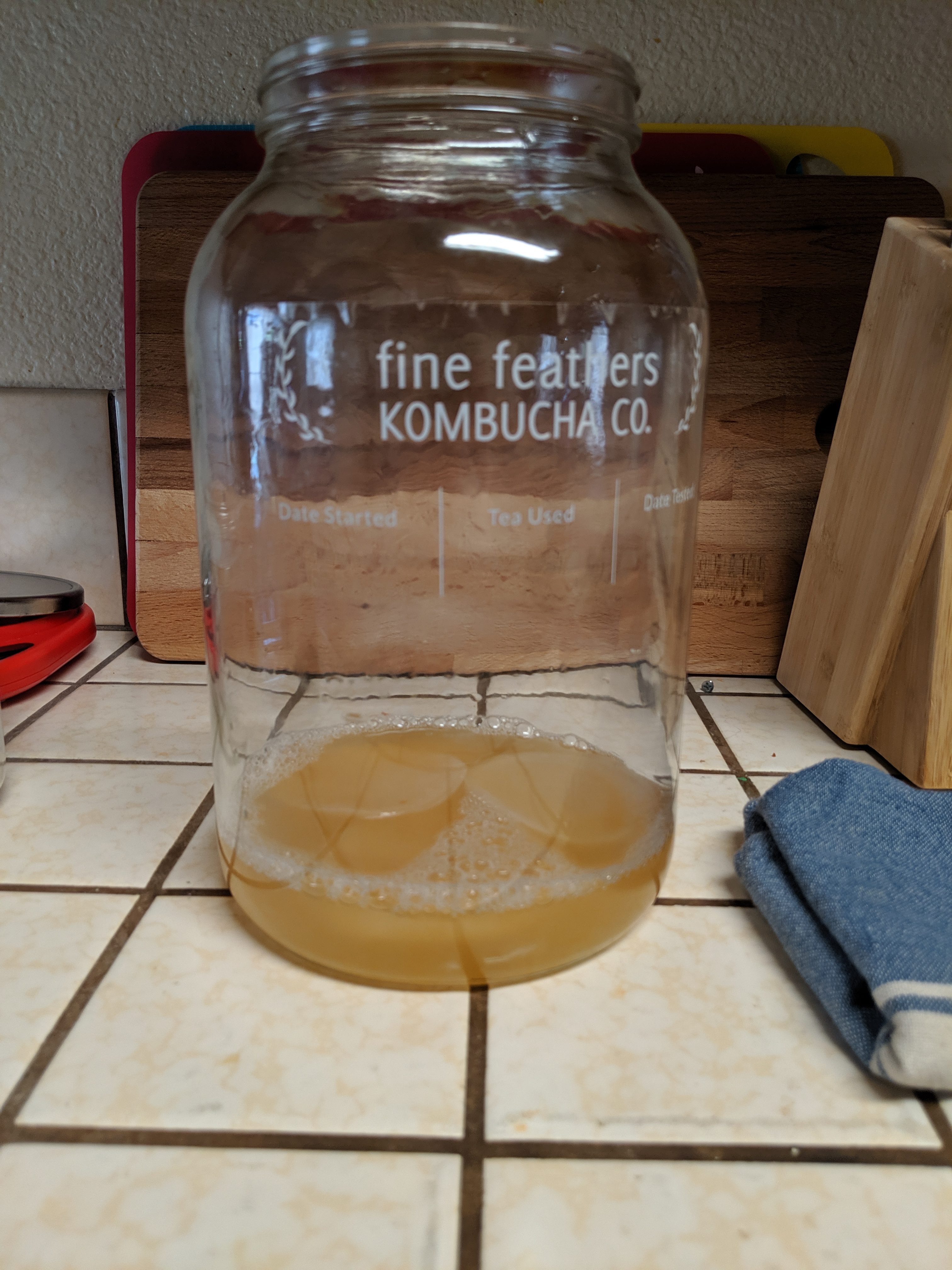I know I’m about a decade late to this trend, but I’ve recently become addicted to kombucha.
This is news because as of three months ago, I gagged after a taste of the fermented tea drink—I made the mistake of sniffing it beforehand and got a noseful of vinegary odor. But after seeing one of my favorite YouTubers drink lots of it and mention it in a few of her videos and getting back from an international trip that left me feeling for the need of a gut boost, I decided to try the probiotic-laden drink again.
I opened a bottle of pomegranate flavored ‘booch—as we aficionados are wont to say—that had been sitting in my fridge for about a month, after a particularly optimistic grocery store run. I plugged my nose and took a sip.
And… I liked it? I took another, thinking maybe I was mistaken… Yes! I actually loved it.
I started drinking more of it. The bubbly, tart drink became a regular part of my day; an afternoon treat to perk me up with the added benefit of making me feel good about myself because, well, probiotics.
But, at $3 per bottle on the lower quality end to $6 per bottle on the higher end, it soon became a pricey habit, even when I stuck to drinking half a bottle at a time.
So, the next step in feeding my habit was to make the stuff. Upon hearing of my addiction, Hi-lo reporter Asia Morris told me that our very own local kombucha company, Fine Feathers Kombucha Company, hosts homebrew workshops. So I signed up and forked over the $60 for the workshop and all the supplies needed to make a batch.
The workshop is in the Fine Feathers store located at 2296 Long Beach Boulevard, and is taught by the owners of the operation, Jay and Jodine Penev.
In Jay’s own words, the approximately two-hour class would only be able to scrape the surface of the biological and chemical processes of what kombucha brewing entails, but it’s definitely enough to get started and brew a successful first batch.

With a powerpoint full of diagrams and a table of supplies, Jay took us through the process, explaining each step and the basic biomechanics of brewing.
He explained to myself and the handful of classmates, what a SCOBY is— a Symbiotic Culture of Bacteria and Yeast; the funky-looking, gelatinous, off-white home to the yeast and bacteria that turns sweet tea into kombucha.

Jay told us how to make the sweet tea that would feed our “SCOBY-babies,” and explained why cold-brewing the tea is easier than brewing it hot and running the risk of killing our SCOBY with heat.
During the brewing cycle, the yeast and oxygen would turn the sugar into alcohol and the bacteria would make the tea more acidic. Jay and Jodine told us the best spot to brew our ‘booch—on top of the fridge—and that little bubbles forming on the top edges of the jar are the first indicators that your brew is viable.
They taught us how to flavor our ‘booch and carbonate it—carefully!—while encouraging us to try new flavor infusions when we got comfortable.

Contrary to most businesses who want you hooked and buying their product for as long as possible, Jay and Jodine made it clear they wanted us to succeed at making our own brews—even if it meant we might buy less of their kombucha in the future.
The couple has also worked hard at creating a community around the homebrewing hobby. They created a robust Facebook group where brewers can ask questions and get advice as well as host bottle-shares so people can trade and try each others’ brews.
It was obvious by the end of the class that they love sharing their passion and want to truly help their pupils hone the craft. Once I got home and told my husband all about what I’d learned, I shared how much I found that aspect a pleasant surprise. He reminded me of a simple truth of our town: “Yeah, that’s the Long Beach way.”
Oh yeah, my batch turned out fantastic—I’m even brewing my second as we speak. See the process below:













